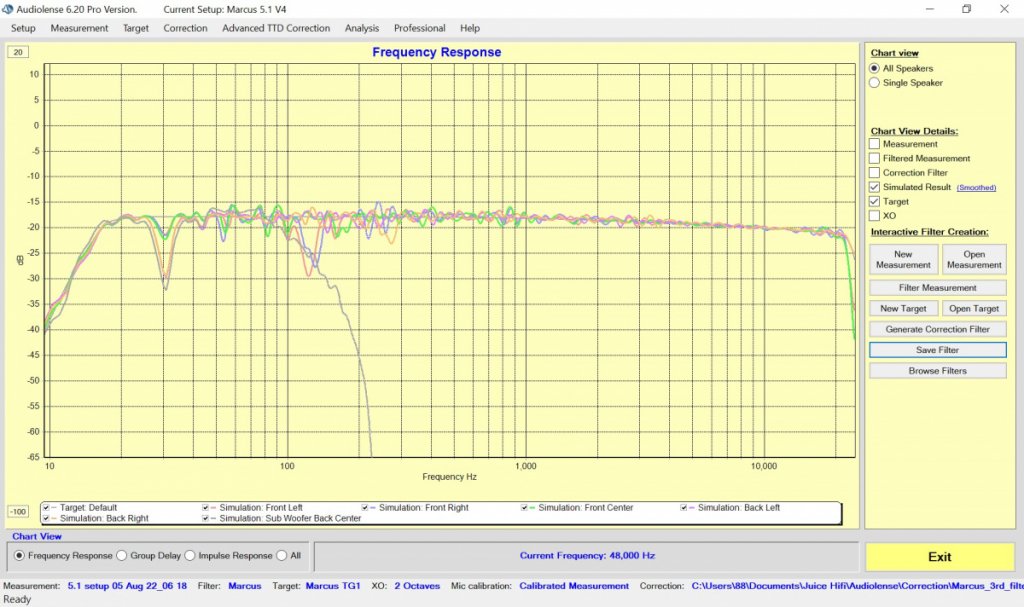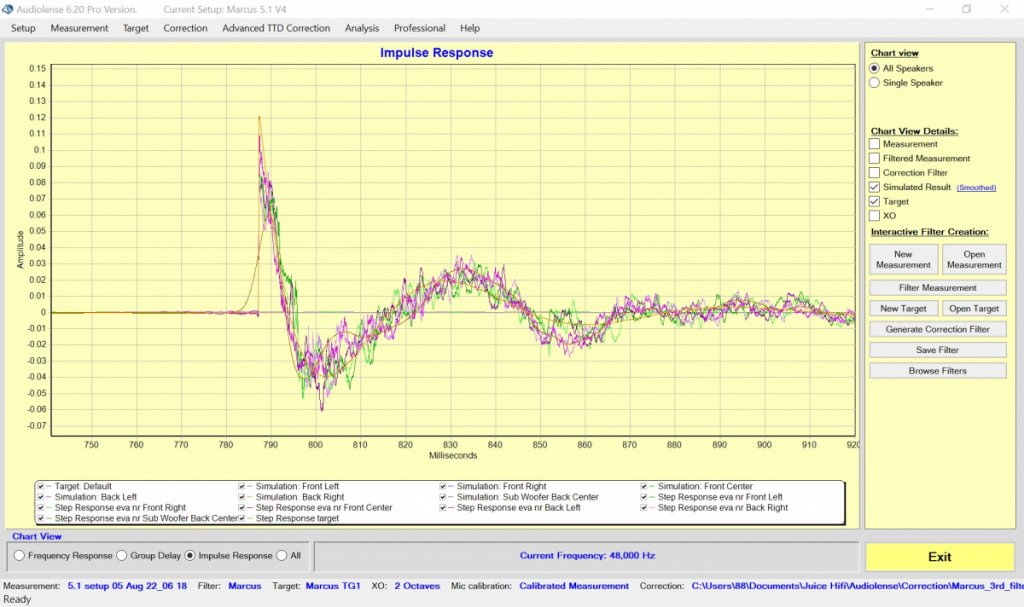Mitch and I spoke today about the third filterset. If you want to know what he does when designing filters, watch his YouTube video, "
Understanding the State of the Art of Digital Room Correction",
https://www.youtube.com/watch?v=yfGAUvyvdNU&t=5010s. I admit, he presents a lot of information and it can be tough to get through it in one sitting. I had to watch it several times. But, once you find out his process, you realize this truly is "State of the Art" stuff.
Edit: The YouTube video that got me connected with Mitch was an interview by Jason (The Intellectual People Podcast). This might be the best way to learn about DSP and Mitch Barnett.
Accurate Sound Calibration using Digital Signal Processing (DSP) | Mitch Barnett,
https://www.youtube.com/watch?v=H1n8o7Wv4LQ.
Over the weekend, I listened to hours of music (classical, multichannel surround). Music included orchestras, ensembles, vocals and choirs. In my opinion, he made an already great sounding system even better. Clarity, realism, width and depth are all improved. Never once did I feel the sound quality was diminished. In fact, I was so enjoying all the music, I didn't fall sleep in my recliner (how's that for no listening fatigue!).
We are done with the process. I can put the measurement microphone away! Mitch did give me two methods to overcome "filter insertion loss". I'll try each one. But, even with no changes, I have plenty of volume so this is a low priority.
Here's Mitch's assessment: "
... you are getting an excellent response, both in the frequency and time domain. Technically, you are getting the ideal minimum phase response to your ears without any frequency or time domain distortions."
Here's the "simulated" frequency response with Mitch's filters.

Here is the "step" response:

I still don't understand all of it but his final thoughts to me were very motivating: "
That is an awesome open baffle system you have there, and the correction filters fully optimize what you have. I bet it sounds pretty good."
I agree. Time to listen to music and forget about "adjustments".
Edit: I implemented Mitch's method of overcoming filter insertion loss. Works perfect.
Marcus